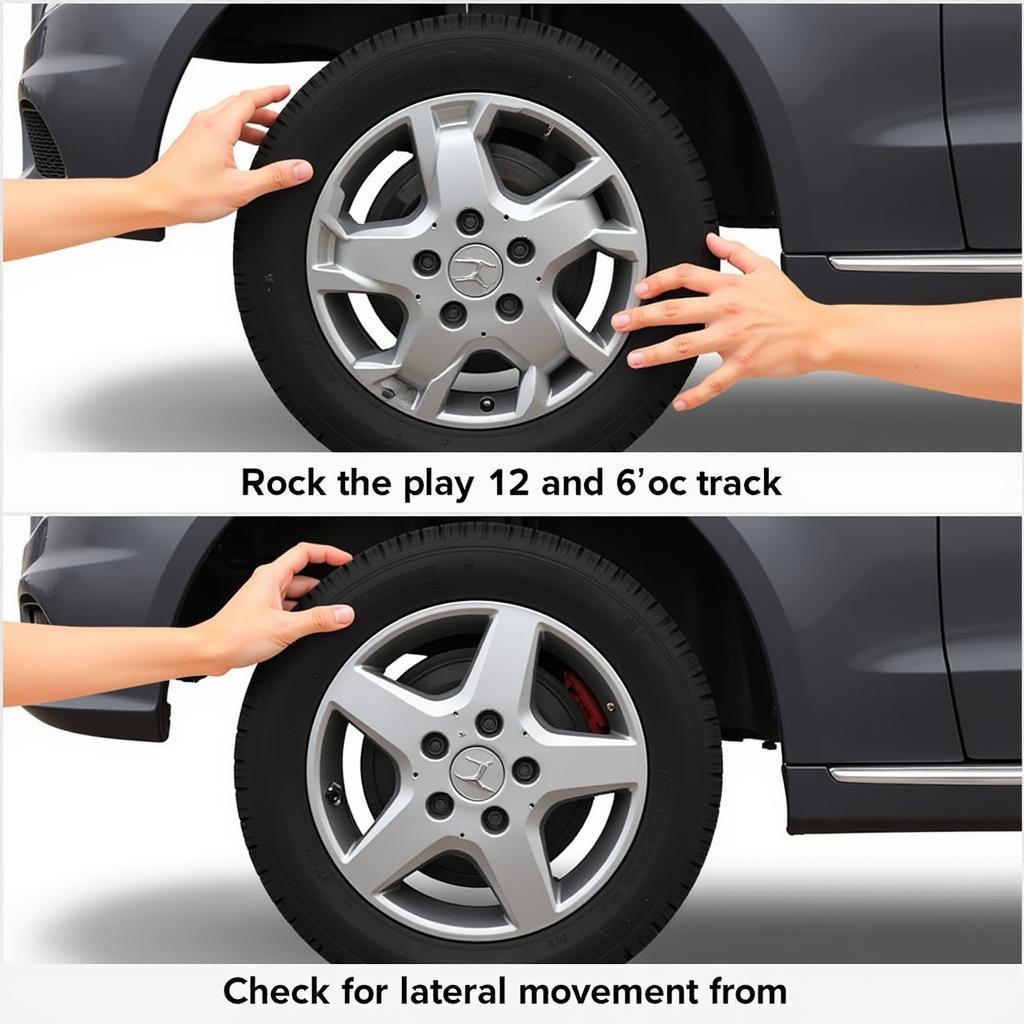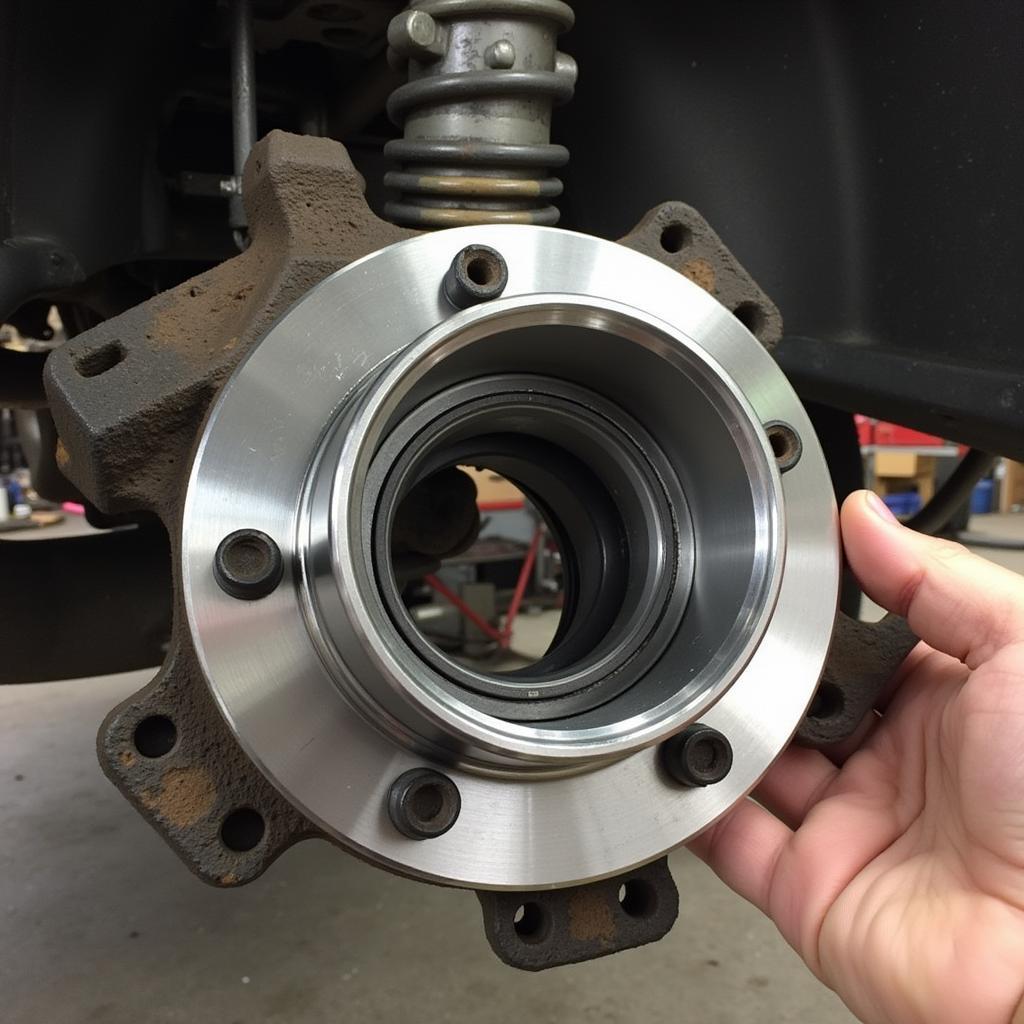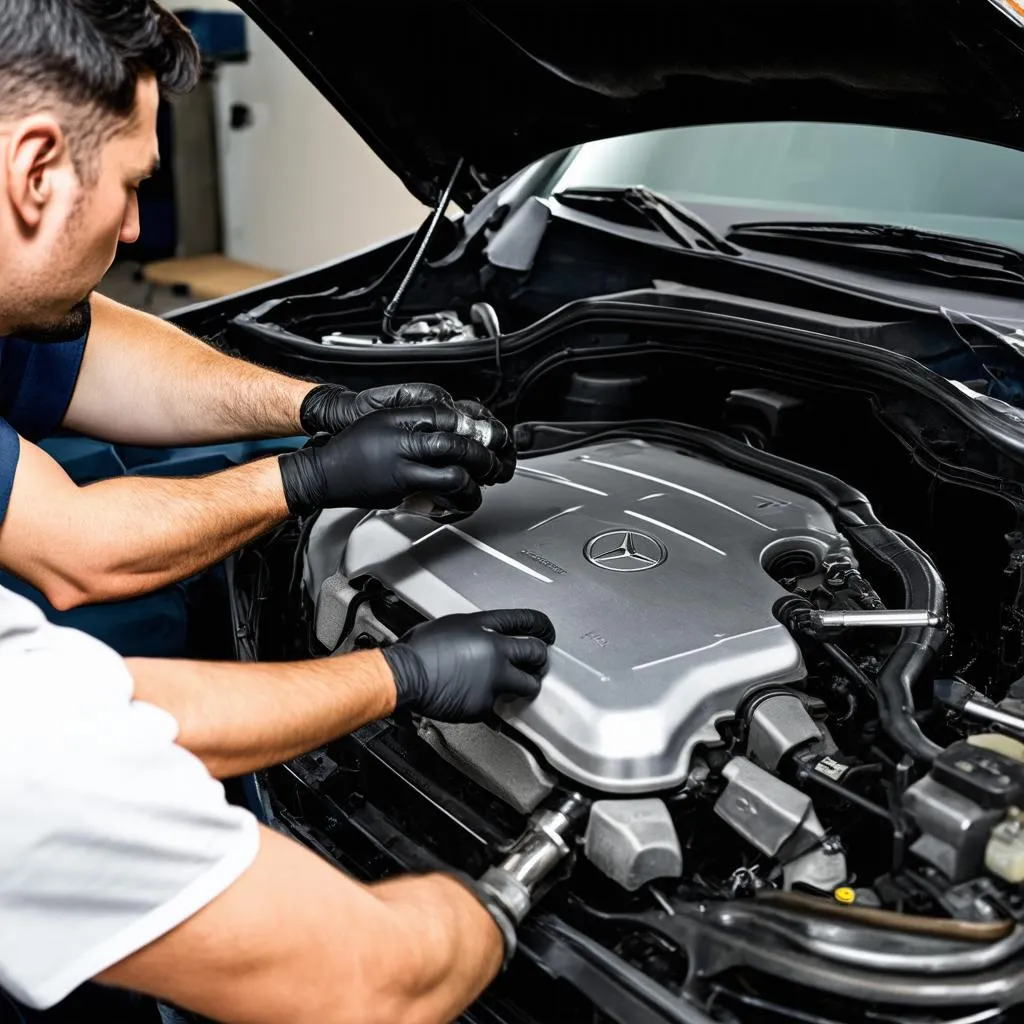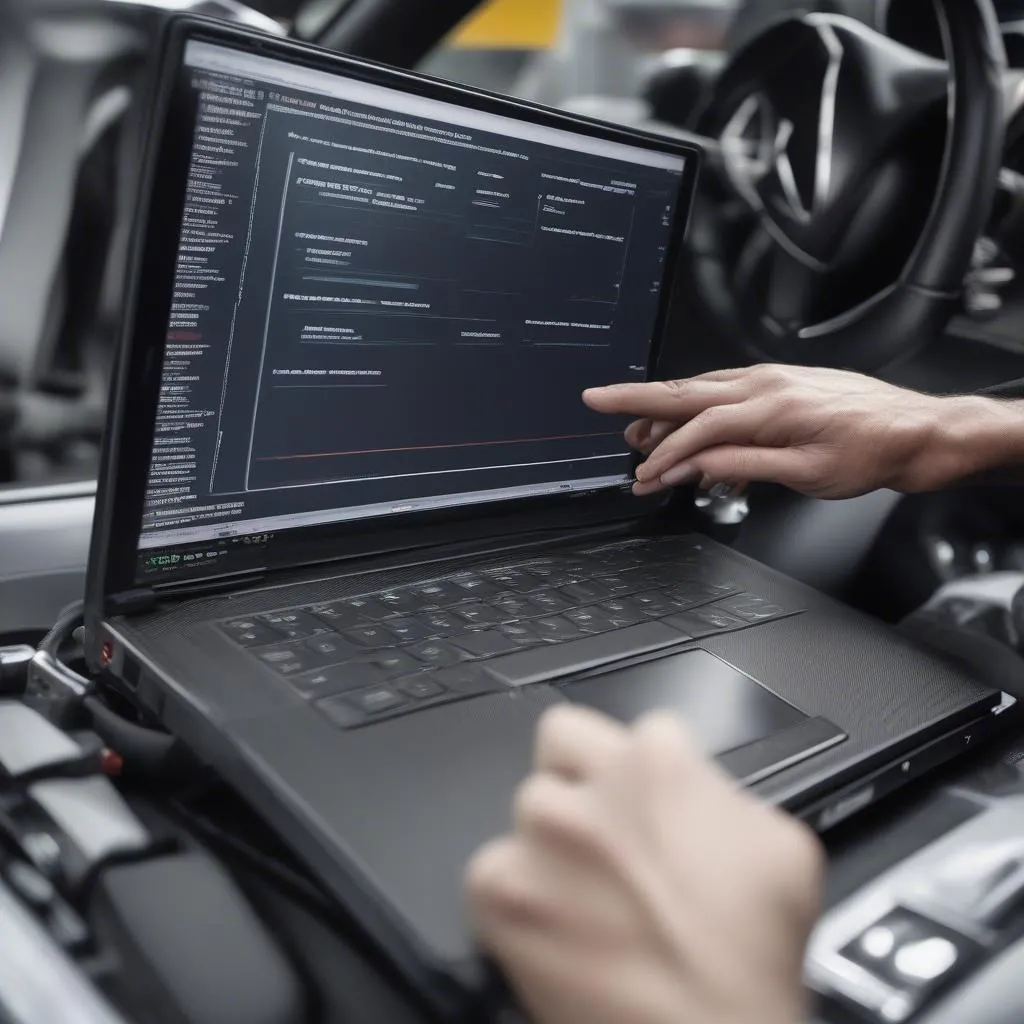Fixing your 2000 Mercedes E430 front wheel bearings can seem daunting, but with the right guidance, it’s a manageable task. This guide will walk you through diagnosing bad wheel bearings, understanding the replacement process, and offering valuable tips for a successful repair.
Identifying a Failing Front Wheel Bearing on Your E430
Several signs indicate a worn-out front wheel bearing on your Mercedes E430. The most common symptom is a humming or growling noise that changes pitch with speed. This sound often increases when turning and decreases when straightening the steering wheel. Other indicators include a vibrating steering wheel, uneven tire wear, and ABS light activation. Ignoring these symptoms can lead to more serious problems, so addressing them promptly is crucial.
A simple test involves jacking up your E430 and checking for play in the wheel. Grab the tire at the 12 and 6 o’clock positions and try to rock it. Noticeable play suggests worn bearings. Similarly, grab the tire at the 3 and 9 o’clock positions and check for lateral movement. Any looseness warrants further inspection.
 Checking for play in the E430 front wheel bearing
Checking for play in the E430 front wheel bearing
Mercedes E430 2000 Front Wheel Bearings Fix: DIY or Professional?
Deciding between a DIY fix and seeking professional help depends on your mechanical skills and available tools. Replacing front wheel bearings requires specialized tools like a bearing press and puller. If you’re comfortable working on your car and have access to these tools, a DIY approach can save money. However, if you’re not confident in your abilities, it’s best to entrust the job to a qualified mechanic.
“Choosing the right approach depends on your comfort level,” says Tim Johnson, a seasoned automotive technician with over 20 years of experience. “While a DIY approach can save you some cash, a professional repair ensures proper installation and avoids potential complications.”
Step-by-Step Guide to Replacing Front Wheel Bearings on a Mercedes E430 (2000)
If you choose the DIY route, here’s a step-by-step guide:
- Safety First: Secure the vehicle on jack stands and engage the parking brake.
- Remove the Wheel: Remove the lug nuts and the wheel.
- Disassemble the Brake Caliper and Rotor: Disconnect the brake caliper and carefully remove the brake rotor.
- Access the Wheel Bearing: This often involves removing various suspension components, such as the tie rod end and the axle nut.
- Press Out the Old Bearing: Use a bearing press to remove the old wheel bearing from the hub.
- Install the New Bearing: Press the new bearing into the hub, ensuring it’s seated correctly.
- Reassemble: Put everything back together in reverse order, torquing all bolts to the manufacturer’s specifications.
“Precision is key during reassembly,” advises Maria Sanchez, an automotive engineer specializing in chassis systems. “Incorrectly torqued bolts can lead to premature wear or even component failure. Always refer to the vehicle’s service manual for the correct torque specifications.”
Choosing the Right Replacement Parts
Selecting high-quality replacement bearings is essential for longevity and performance. Opt for reputable brands known for their durability and reliability. Avoid cheaper alternatives, as they often wear out quickly and can compromise safety.
Preventing Future Wheel Bearing Problems
Regular maintenance and careful driving habits can help prolong the life of your wheel bearings. Avoid hitting potholes and curbs whenever possible. Regularly rotating your tires and maintaining proper tire pressure also contributes to even wear and tear on wheel bearings.
 New front wheel bearing installed on a Mercedes E430
New front wheel bearing installed on a Mercedes E430
Conclusion
Addressing your Mercedes E430 2000 front wheel bearings fix promptly ensures a smooth and safe driving experience. Whether you choose a DIY approach or seek professional assistance, understanding the process and choosing quality parts are paramount. This comprehensive guide provides the necessary information to tackle this repair effectively.
FAQ
- How often should I replace my front wheel bearings? There’s no set interval, but they typically last 85,000 to 100,000 miles.
- Can I drive with a bad wheel bearing? It’s not recommended, as it can lead to further damage and safety hazards.
- What tools do I need to replace front wheel bearings? Specialized tools like a bearing press and puller are essential.
- How much does it cost to replace front wheel bearings professionally? The cost varies depending on location and labor rates, but it typically ranges from $300 to $800 per axle.
- What causes wheel bearings to wear out? Normal wear and tear, impacts from potholes or curbs, and improper tire maintenance can all contribute to bearing failure.
- How can I tell if my front wheel bearings are bad? Listen for humming or growling noises, feel for vibrations in the steering wheel, and check for uneven tire wear.
- Is it difficult to replace front wheel bearings myself? It’s a moderately challenging repair that requires mechanical skills and specialized tools.
Common Scenarios and Questions
- Scenario: My steering wheel vibrates at high speeds. Could this be a wheel bearing issue? Yes, a vibrating steering wheel, especially at higher speeds, can be a sign of a worn wheel bearing.
- Question: Can I just replace one front wheel bearing, or should I replace both? While you can replace just one, it’s generally recommended to replace both at the same time to ensure even wear and performance.
Further Reading and Related Articles
- Check out our article on Diagnosing Common Mercedes E430 Problems.
- Learn more about Wheel Bearing Maintenance Tips.
Need help? Contact us via Whatsapp: +1 (641) 206-8880, Email: CARDIAGTECH[email protected] or visit us at 276 Reock St, City of Orange, NJ 07050, United States. Our customer support team is available 24/7.


